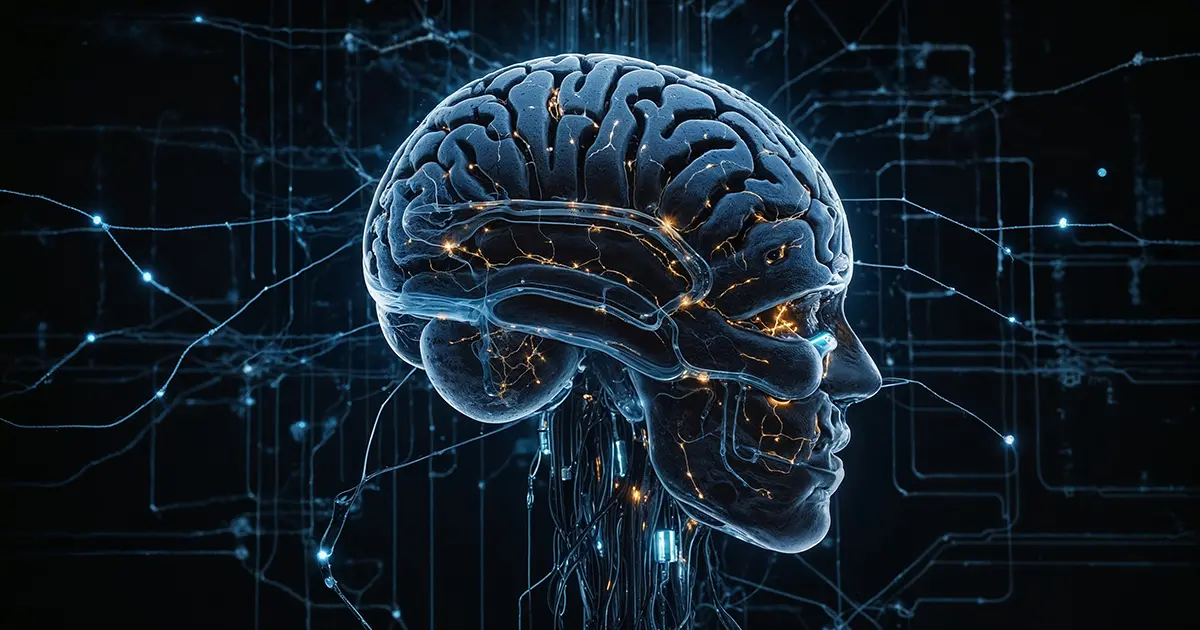AI for Beginners: Protecting Your Personal Data from Digital Threats
In today’s digital world, identity theft is a growing concern. Cybercriminals are using artificial intelligence (AI) to access sensitive information, resulting in identity theft and fraud. This article explains how AI can both threaten and protect your personal information, and provides practical tips and tools for keeping your information safe online.
The growing threat of personal data theft
In our increasingly digital world, the theft of personal information has become a serious problem. Every time we log on to a website, make an online purchase, or even scroll through social media, we leave digital traces behind. Cybercriminals can use these traces to steal sensitive information for malicious purposes. Whether it’s identity theft, fraud, or selling information on the dark web, the misuse of personal information is more widespread than ever.
The rise of artificial intelligence (AI) has created new opportunities to both protect and exploit personal data. Unfortunately, AI-powered tools can be misused by cybercriminals to automate and enhance their attacks. Understanding how AI works in this context is the first step to protecting yourself.

What are personal data and why is it important?
Personal information is any information that can be used to identify you, either directly or indirectly. It ranges from basic information such as your name and email address to more sensitive information such as your financial information or biometric data. Here are the main categories of personal information:
Each category has a different level of importance, but all types of personal information can be valuable to cybercriminals. For example, basic identifiers may not seem dangerous on their own, but when combined with other information, they can be used to create detailed profiles for fraudulent purposes.
How AI is being used to exploit personal data
Artificial intelligence is a powerful tool, and like any tool, it can be used for both good and bad. Unfortunately, criminals have begun using AI to streamline their illegal activities. Here’s how:
- Automated phishing attacks: AI can quickly generate realistic-looking emails that trick people into sharing their personal information. These phishing attempts are becoming harder to detect because AI can mimic writing styles and personalize messages.
- Data scraping: AI-powered bots can scan public and private websites for personal data, collecting large amounts of information in a short amount of time. This data can then be sold or used to commit fraud.
- Deepfakes: AI can create convincing fake video or audio recordings that are often used to blackmail or deceive people. For example, a deepfake could imitate a person’s voice to convince a bank to transfer money.
The danger here is how quickly and efficiently AI can perform these tasks, making large-scale data theft easier and more dangerous than ever.


How AI can help protect your personal information
While AI can be abused by criminals, it can also be a powerful ally in protecting your personal information. AI technologies can detect threats, monitor suspicious activity, and prevent attacks before they happen. Here are some ways AI is being used to keep your data safe:
- AI-powered fraud detection: Financial institutions use AI to detect unusual patterns in transactions and flag potential fraud. For example, if your bank notices an unusual purchase, AI can immediately alert you and freeze your account.
- Antivirus and anti-malware software: AI is now being integrated into modern cybersecurity software, making it possible to detect malware more efficiently. These tools use AI to identify and stop new types of viruses and cyber threats.
- AI-based encryption: Some tools use AI to encrypt your data, making it inaccessible to unauthorized users. This technology automatically scrambles sensitive information, making it unreadable without the right key.
By using AI to protect your data, you can reduce the risk of becoming a victim of cybercrime. The next step is to make sure you are using the right tools.
Practical tools to protect your personal information
To help protect your personal information, here are some AI-powered tools and applications that even beginners can use:
These tools are easy to install and use, making them suitable for people who may not be familiar with advanced technology. By setting up these tools, you can ensure that your data remains secure without requiring extensive technical knowledge.

Tips for Staying Safe in the Digital Age
To avoid becoming a victim of identity theft, here are some basic precautions you can take:
- Use strong passwords: Always create strong, unique passwords for each of your accounts. Avoid using the same password on multiple sites.
- Enable two-factor authentication (2FA): 2FA adds an extra layer of security to your online accounts. In addition to your password, you’ll need to enter a code that’s sent to your phone.
- Be careful with public Wi-Fi: Public Wi-Fi networks are often not secure. Avoid using them to access sensitive accounts, such as online banking.
- Monitor your financial statements: Check your bank and credit card statements regularly for suspicious activity.
Conclusion: How to protect yourself in the digital age
In an age where personal data theft is on the rise, understanding how to protect your information is essential. AI can be used as both a tool for harm and a shield against digital threats. By using AI-powered tools such as antivirus software, password managers, and fraud detection systems, you can significantly reduce the risk of your data being stolen.
Stay informed, use the right tools, and always be careful when sharing your personal information online.

















